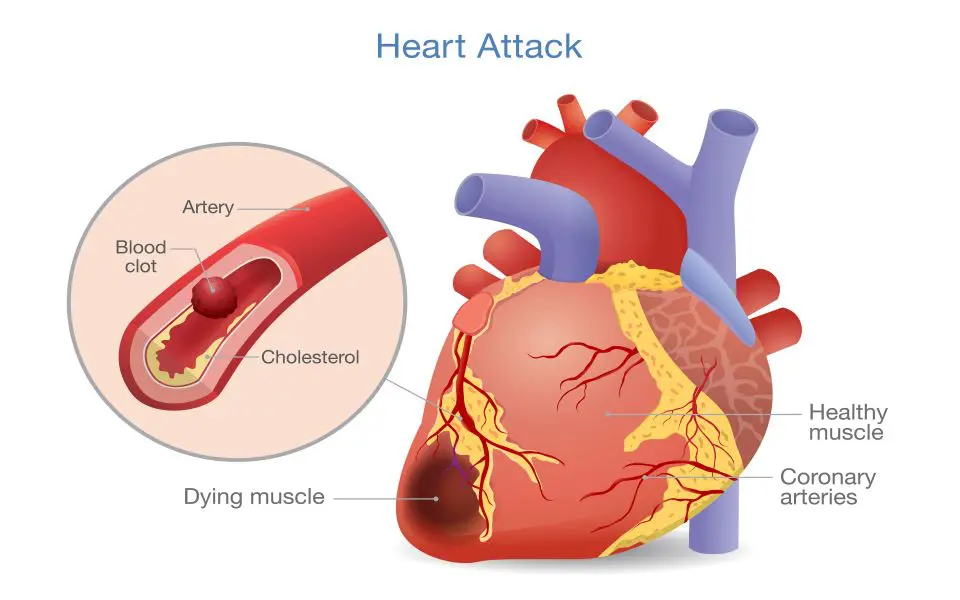Heart Attack Risk Factors
Men: Common heart attack risk factors for men include high blood pressure, high cholesterol, obesity, genetics and tobacco use. High stress levels, lack of sleep and poor diet also influence a man’s risk for heart disease and heart attack.
Women: Most risk factors associated with men also apply to women. However, other health conditions elevate a woman’s risk of a heart attack. Those factors include endometriosis, polycystic ovary syndrome, gestational diabetes and high blood pressure caused by pregnancy. Estrogen can lower a woman’s risk for heart disease, but that changes during menopause once their bodies stop producing as much of the hormone.
Heart Attack Symptoms in Men
Chest pain is the most common heart attack symptom in men. It’s often described as feeling like an elephant is sitting on someone’s chest, but it also presents as a sensation of fullness or squeezing. Chest pain may last for a few minutes and go away or recur. Men might also experience pain or discomfort in their arms, back, neck, jaw and stomach.
Other signs of a heart attack include:
- Shortness of breath
- Cold sweats or clamminess
- Light-headedness
- Nausea
Heart Attack Symptoms in Women
Most of what is known about heart attack symptoms is based on research on middle-aged men, but women can present slightly different warning signs. Thus, women are more likely to experience symptoms for several weeks before realizing they’re having a heart attack.
Other heart attack symptoms for women include:
- Squeezing or tightness in the chest
- Pain in the arms, neck, jaw, stomach or back
- Numbness or tingling in the arms
- Unexplained fatigue
- Sleep issues
- Sweating
- Nausea
- Indigestion
How to Prevent a Heart Attack
Get physically active: Exercising helps manage body weight, heart rate, cholesterol and blood pressure, which all affect heart health. A good weekly fitness routine includes 150 minutes of moderate aerobic exercise, such as running, biking or swimming, and at least two strength training sessions.
Eat a heart-healthy diet: Avoid excess salt, sugar, saturated fats, processed carbs and alcohol. Onions, spinach, broccoli, mushrooms, bell peppers, carrots, berries and tomatoes are heart-friendly foods. It’s also important to eat foods with omega-3 fatty acids, such as salmon, tuna and walnuts.
Eliminate tobacco products: Nicotine narrows blood vessels, restricting blood flow to the heart. Smoking also lowers blood oxygen levels and raises blood pressure.
Manage stress: Unhealthy coping mechanisms like drinking and smoking can contribute to high blood pressure and poor heart health. Journaling, talk therapy, meditation and breathing exercises can help regulate stress.
Get regular screenings and tests: It’s important to get age-appropriate screenings for blood pressure and cholesterol levels, even if you’re exercising and eating well.
Embassy Healthcare offers a cardiac care program to help residents with heart disease and heart failure improve their quality of life. Call 216-378-2050 or contact us online for more information.

